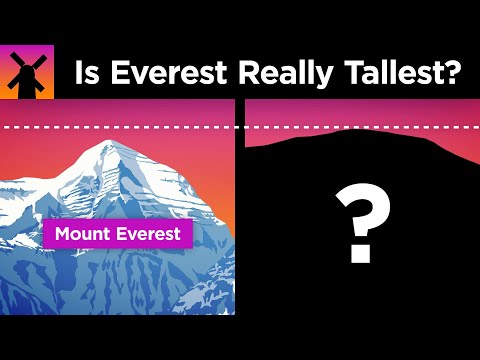
Mount Everest, standing at a majestic 29,029 feet (8,848 meters) above sea level, is commonly known as the highest point on Earth. However, the story of “highest mountains” isn’t as straightforward as it seems. Depending on how we define “highest” and “tallest,” there are other contenders for this title that deserve our attention.
#### Defining “Highest” and “Tallest”
The distinction between the “highest” and the “tallest” mountain is essential in understanding this complex narrative. The term “highest” refers to the elevation above sea level. In contrast, “tallest” is measured from the base of the mountain to its peak.
#### Mount Everest: The Highest Above Sea Level
By the standard measure of height above sea level, Mount Everest is undoubtedly the champion. It towers at nearly five and a half miles into the sky, making it a formidable presence that has attracted climbers for decades. However, if we adjust our perspective slightly, other mountains begin to challenge Everest’s supremacy.
#### Mauna Kea: The Tallest Mountain from Base to Peak
Enter Mauna Kea, a dormant volcano on Hawaii’s Big Island. Most of Mauna Kea lies beneath the Pacific Ocean. When measured from its oceanic base to its summit, Mauna Kea stands more than 33,500 feet (10,210 meters) tall—surpassing Everest by over 4,000 feet (1,200 meters). Yet because its peak is only 13,803 feet (4,207 meters) above sea level, it doesn’t claim the title of highest above sea level.
#### Chimborazo: Farthest Point from Earth’s Center
The plot thickens further when considering Chimborazo in Ecuador. While not nearly as tall or high as Everest or Mauna Kea respectively—its peak is 20,549 feet (6,263 meters) above sea level—Chimborazo holds another fascinating distinction due to Earth’s equatorial bulge (Earth is not a perfect sphere but an oblate spheroid). This geographical feature makes Chimborazo’s summit the farthest point on Earth’s surface from its center—surpassing even Everest.
#### Why These Distinctions Matter
Understanding these distinctions illuminates not only our planet’s diverse topography but also how measurements can tell different stories depending on our perspectives or chosen criteria. For climbers and geographers alike, these varied definitions affect both practical planning for expeditions and theoretical calculations for mapping our world.
#### Conclusion: Multiple Summits of Achievement
So why continue saying that Everest is Earth’s highest mountain? Primarily because when people talk about climbing mountains or reaching their peaks physically and metaphorically—their eyes are often set toward sea-level elevation records that have historically guided adventurers seeking to stand atop the world.
Everest remains unmatched in terms of how high its summit reaches into Earth’s atmosphere from sea level—a significant achievement by any measure. But acknowledging Mauna Kea and Chimborazo helps us appreciate Earth’s complexity and variety more deeply while challenging what it means to reach higher heights.
In conclusion, while Mount Everest may hold onto its title according to one classic definition of mountain height—it faces fascinating competition from other magnificent peaks around our planet when we consider alternative metrics or geographical quirks that remind us just how wondrously variable our terrestrial home can be.
